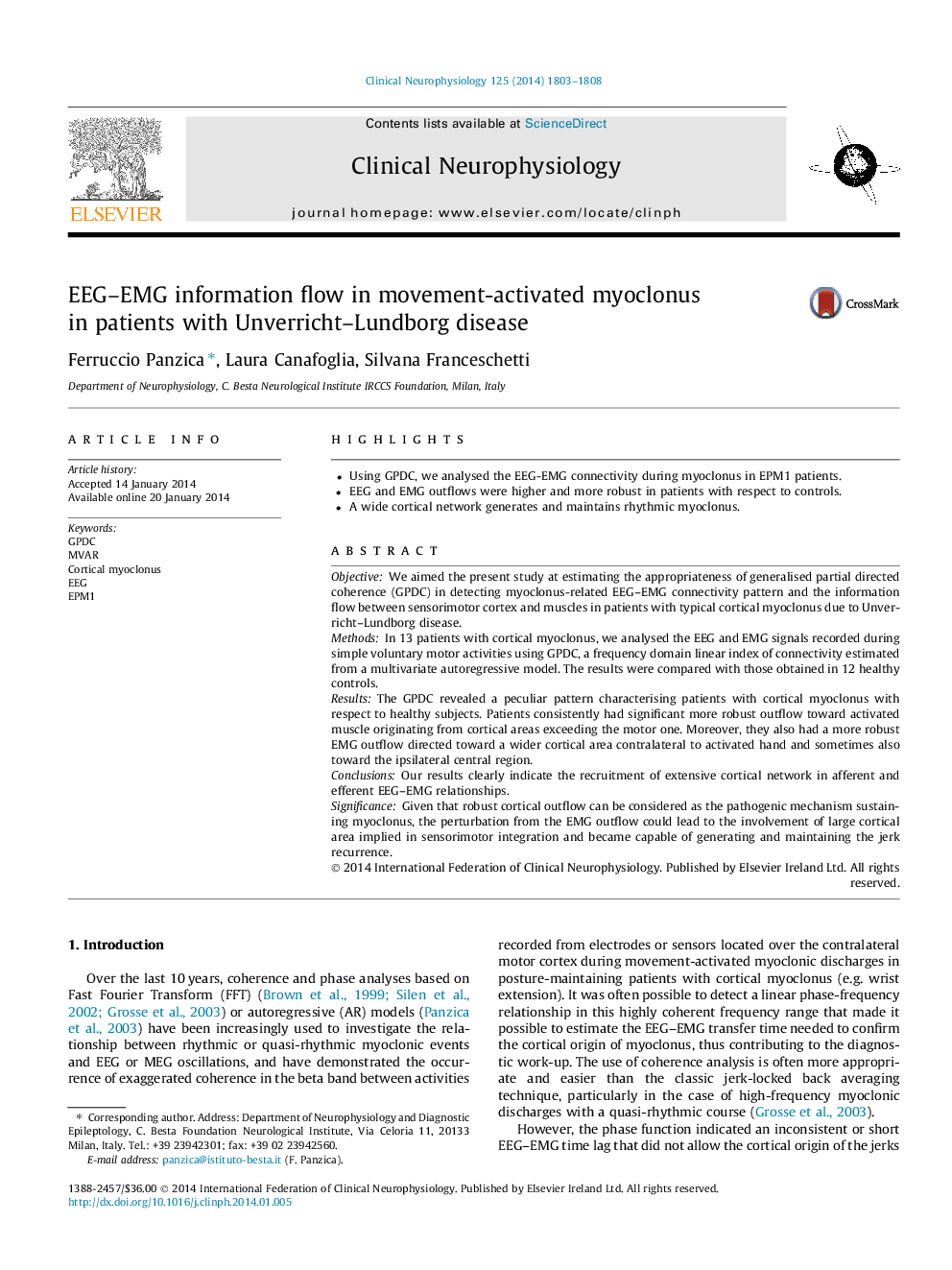| Article ID | Journal | Published Year | Pages | File Type |
|---|---|---|---|---|
| 3043178 | Clinical Neurophysiology | 2014 | 6 Pages |
•Using GPDC, we analysed the EEG-EMG connectivity during myoclonus in EPM1 patients.•EEG and EMG outflows were higher and more robust in patients with respect to controls.•A wide cortical network generates and maintains rhythmic myoclonus.
ObjectiveWe aimed the present study at estimating the appropriateness of generalised partial directed coherence (GPDC) in detecting myoclonus-related EEG–EMG connectivity pattern and the information flow between sensorimotor cortex and muscles in patients with typical cortical myoclonus due to Unverricht–Lundborg disease.MethodsIn 13 patients with cortical myoclonus, we analysed the EEG and EMG signals recorded during simple voluntary motor activities using GPDC, a frequency domain linear index of connectivity estimated from a multivariate autoregressive model. The results were compared with those obtained in 12 healthy controls.ResultsThe GPDC revealed a peculiar pattern characterising patients with cortical myoclonus with respect to healthy subjects. Patients consistently had significant more robust outflow toward activated muscle originating from cortical areas exceeding the motor one. Moreover, they also had a more robust EMG outflow directed toward a wider cortical area contralateral to activated hand and sometimes also toward the ipsilateral central region.ConclusionsOur results clearly indicate the recruitment of extensive cortical network in afferent and efferent EEG–EMG relationships.SignificanceGiven that robust cortical outflow can be considered as the pathogenic mechanism sustaining myoclonus, the perturbation from the EMG outflow could lead to the involvement of large cortical area implied in sensorimotor integration and became capable of generating and maintaining the jerk recurrence.
